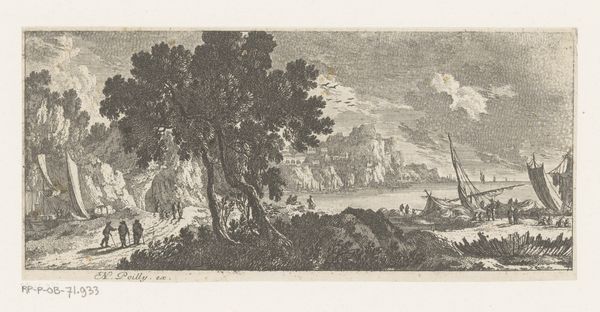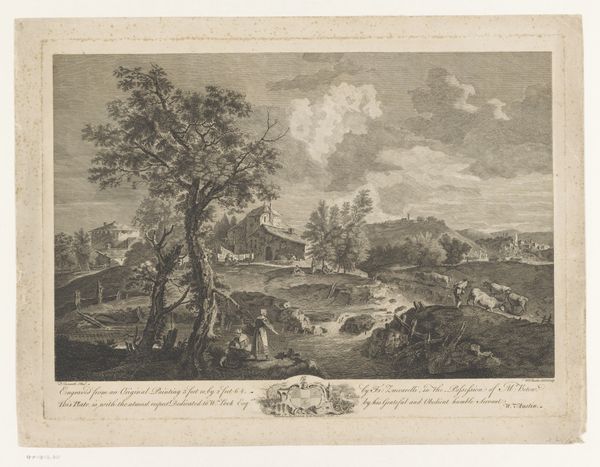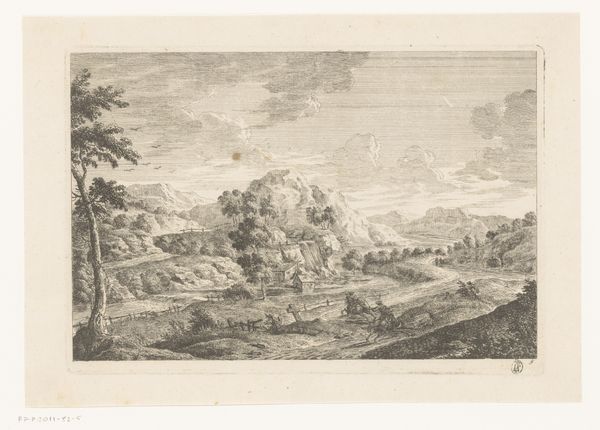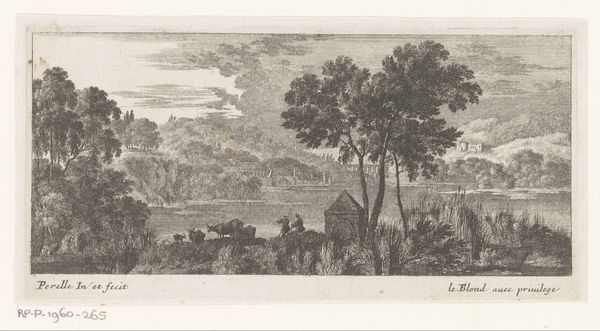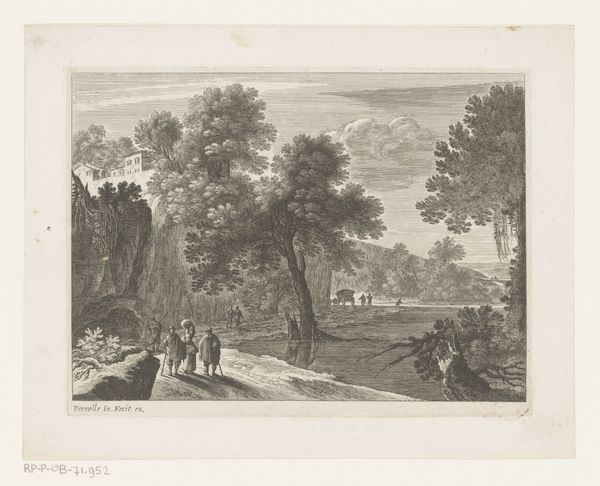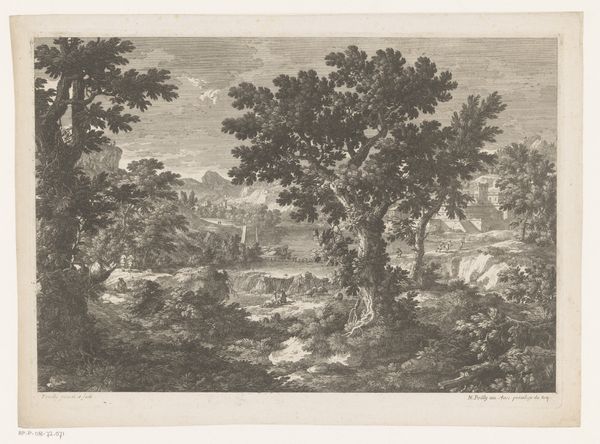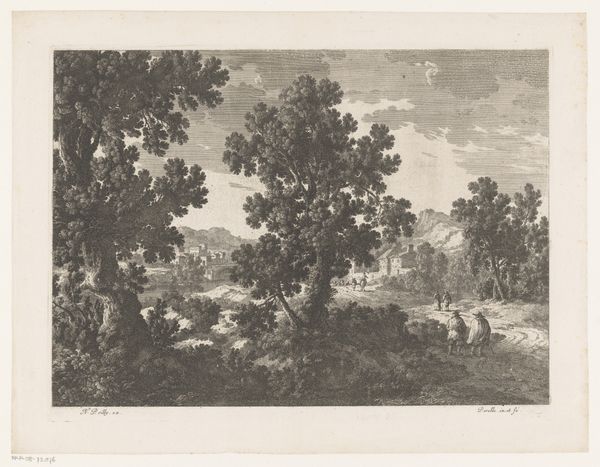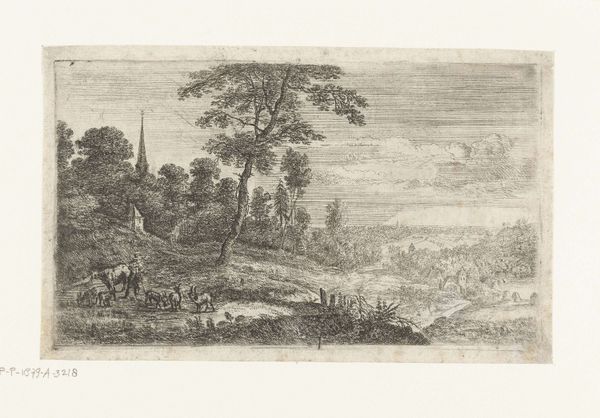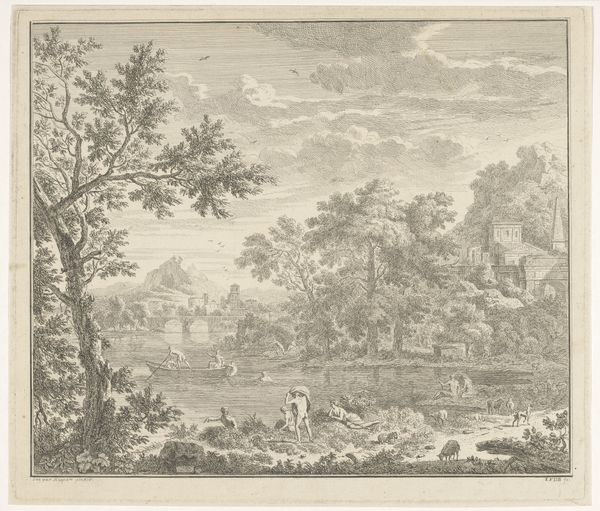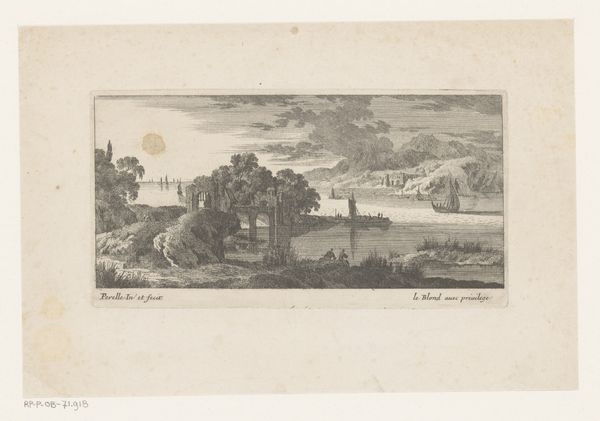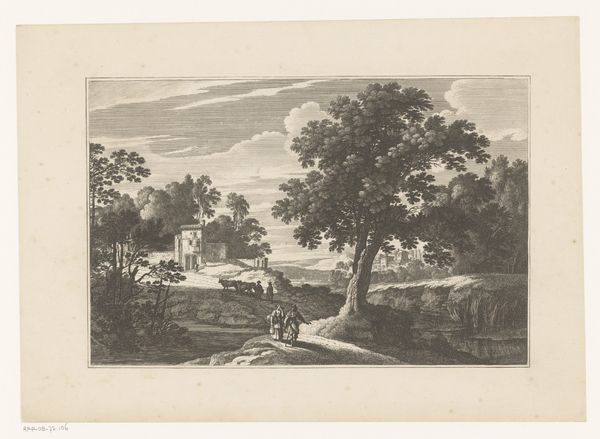
print, etching, plein-air, engraving
#
baroque
#
dutch-golden-age
# print
#
etching
#
plein-air
#
landscape
#
engraving
Dimensions: height 100 mm, width 207 mm
Copyright: Rijks Museum: Open Domain
Curator: This is "Coastal Landscape with Herders and Cows," an etching and engraving, created sometime between 1636 and 1695. Editor: It feels expansive. The low horizon line gives the landscape an almost limitless feel, despite the relatively small size. The texture alone makes it worthwhile—dense hatching suggesting not only tone but a rough materiality. Curator: Nicolas Perelle really captured the ideals of the Dutch Golden Age through landscape imagery, with an interest in depicting working life by the sea, revealing a fascination for the landscape's capacity to harbor the development of collective memory. Editor: I see how it connects to those Golden Age ideals, the everyday elevated to something worthy of artistic attention. Structurally, I'm intrigued by the artist’s choices in the arrangement of the masses. We have a light area in the center foreground pulling the eye back and anchoring the visual field, then two darker shapes on either side containing and leading to the focal point in the background, like gates opening to a brighter world. Curator: What fascinates me is the sheer number of people along the shore. There’s this strong emphasis on humanity interacting with its environment, and not in some purely aesthetic or symbolic way. This piece is as much about the landscape as it is the human imprint upon it. Editor: Agreed, though I would push it slightly differently. These human elements do create a powerful contrast against the broader environmental stage, thus it does offer us a chance to reflect more broadly about the balance between humans and the rest of the natural world. Curator: But this print doesn't just reflect, it actively contributes to the shaping of how Dutch society during the Golden Age remembered, represented, and ultimately, valued their immediate surroundings and local geography. Perelle subtly guides the viewers toward an enduring appreciation for these mundane, almost quotidian, elements. Editor: Perhaps. Regardless of the artist's explicit intention, as viewers today, we find that the print's formal construction nudges us to evaluate humanity's relation to the spaces that we share, inviting questions on spatial ownership, appropriation, and aesthetic representation. Curator: Exactly! The coastal landscape here turns into a vessel carrying societal memories and values, a repository etched for us through the vision of Perelle. Editor: Precisely. I’ve certainly been encouraged to see how the landscape not only provides the spatial stage for cultural activity, but provides the very structure for the artist to develop his rich visual themes.
Comments
No comments
Be the first to comment and join the conversation on the ultimate creative platform.
